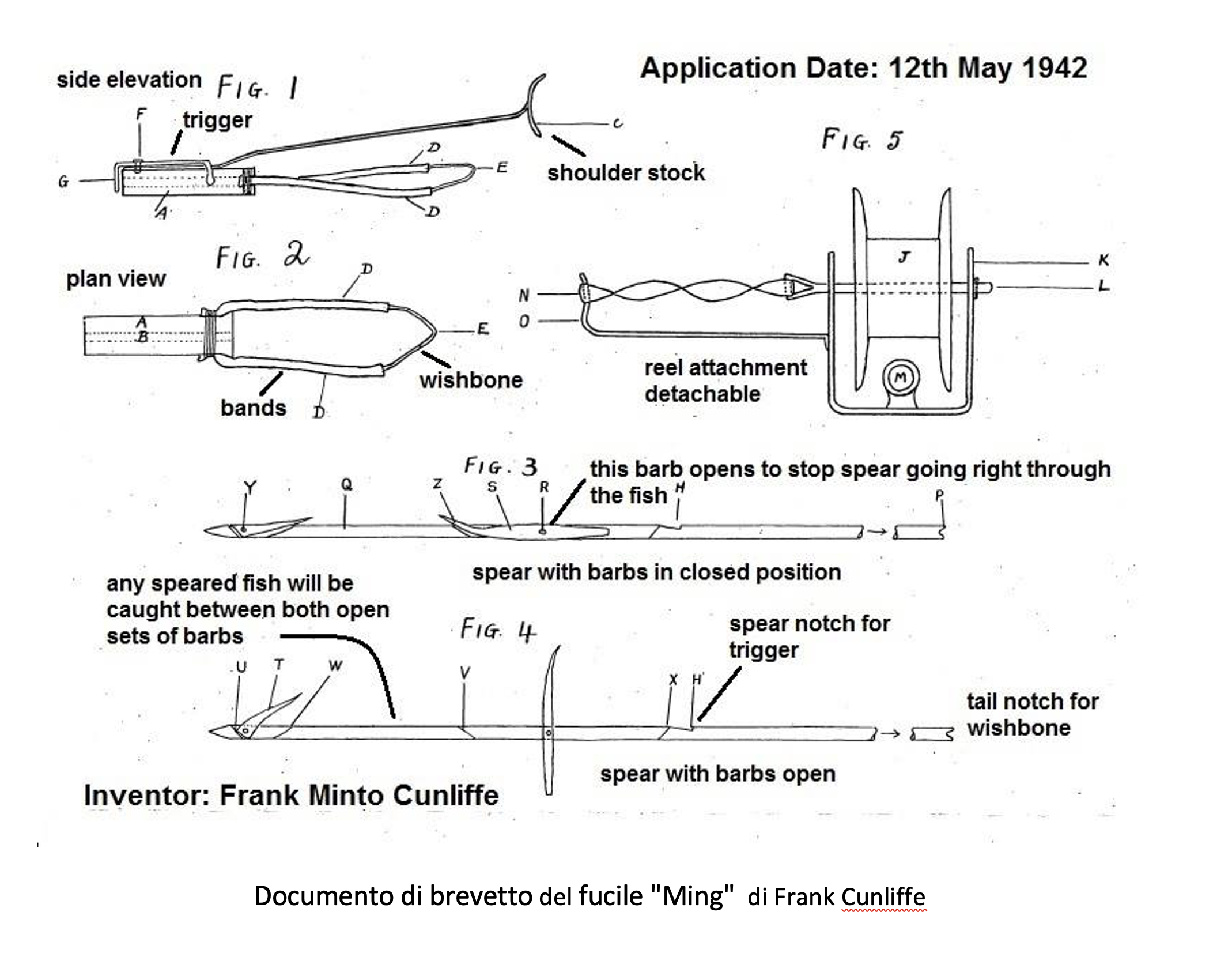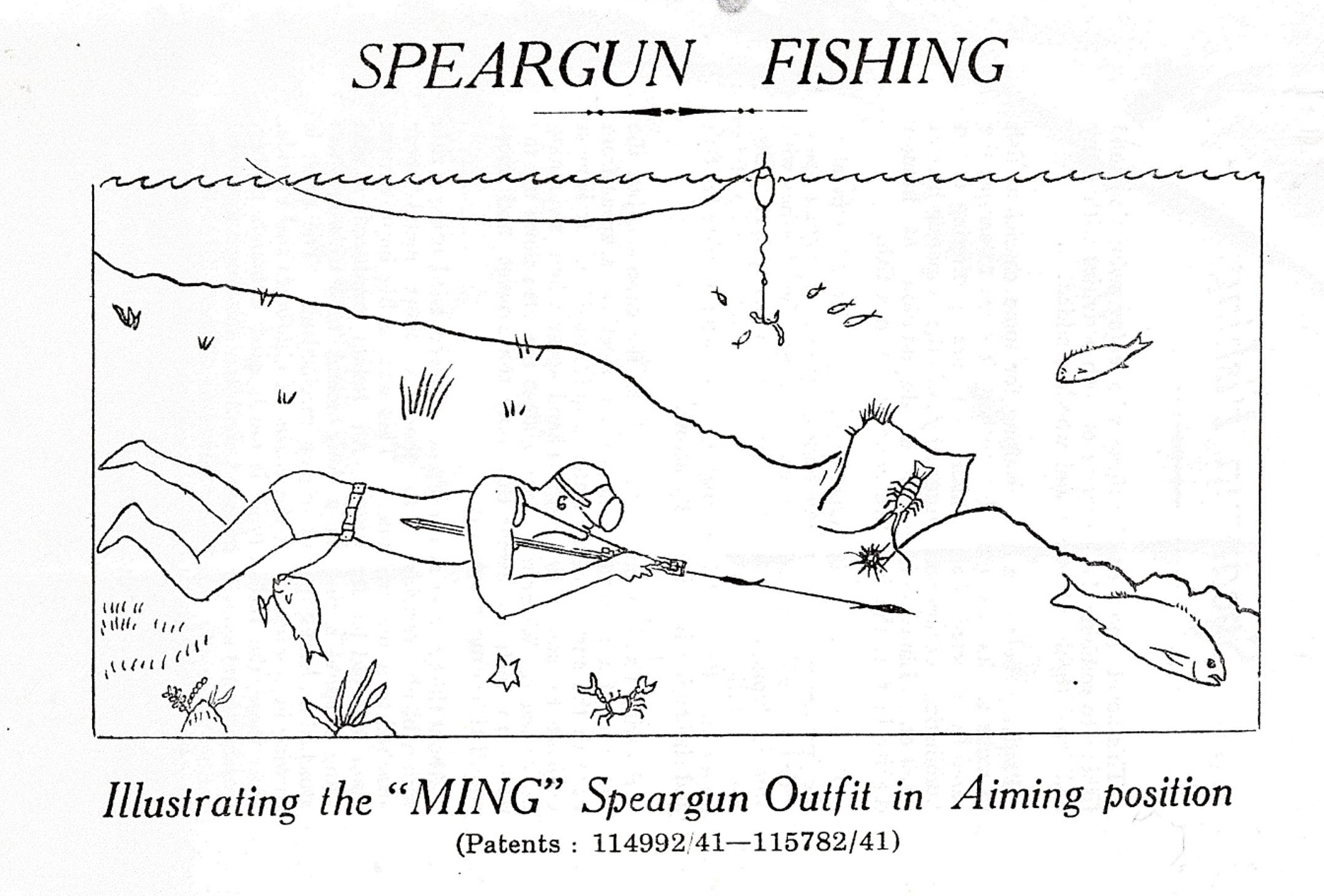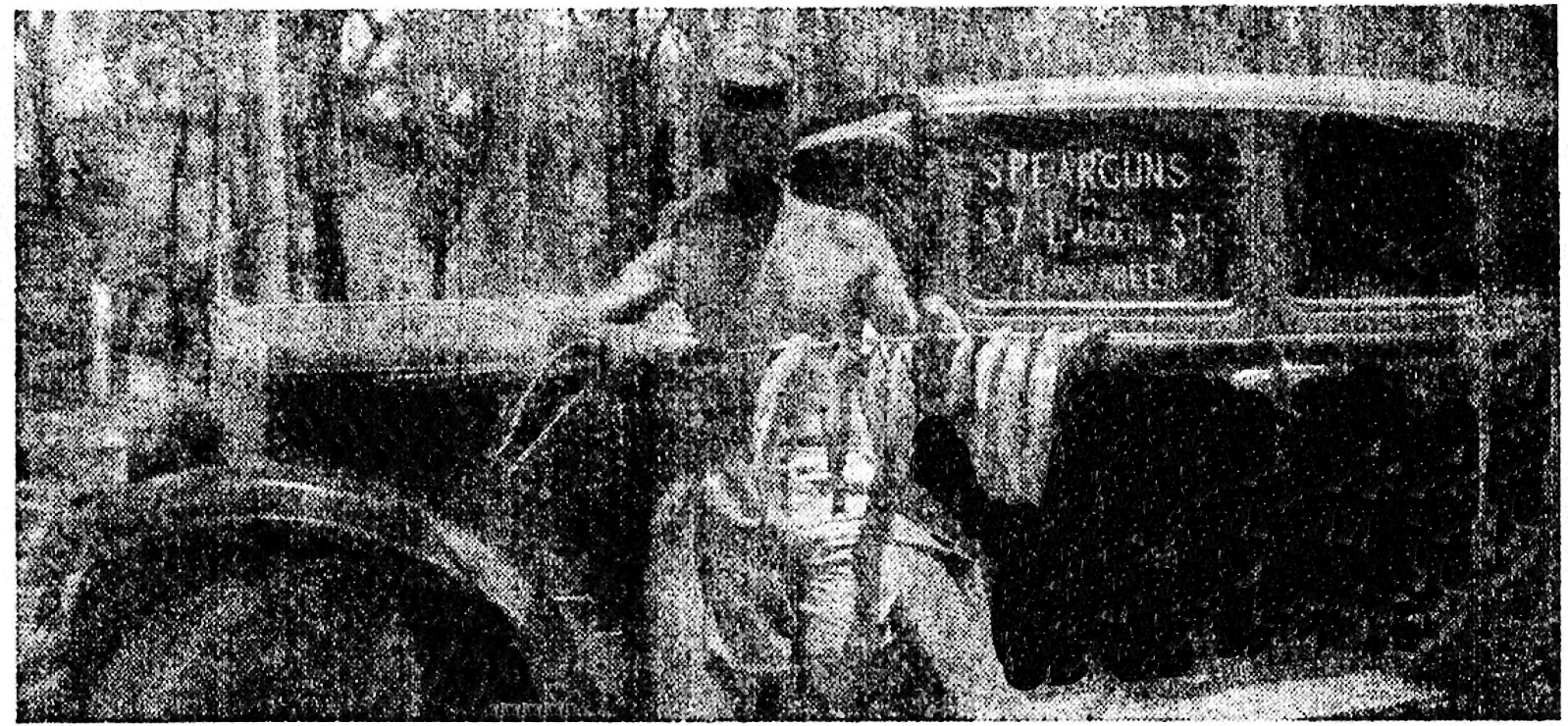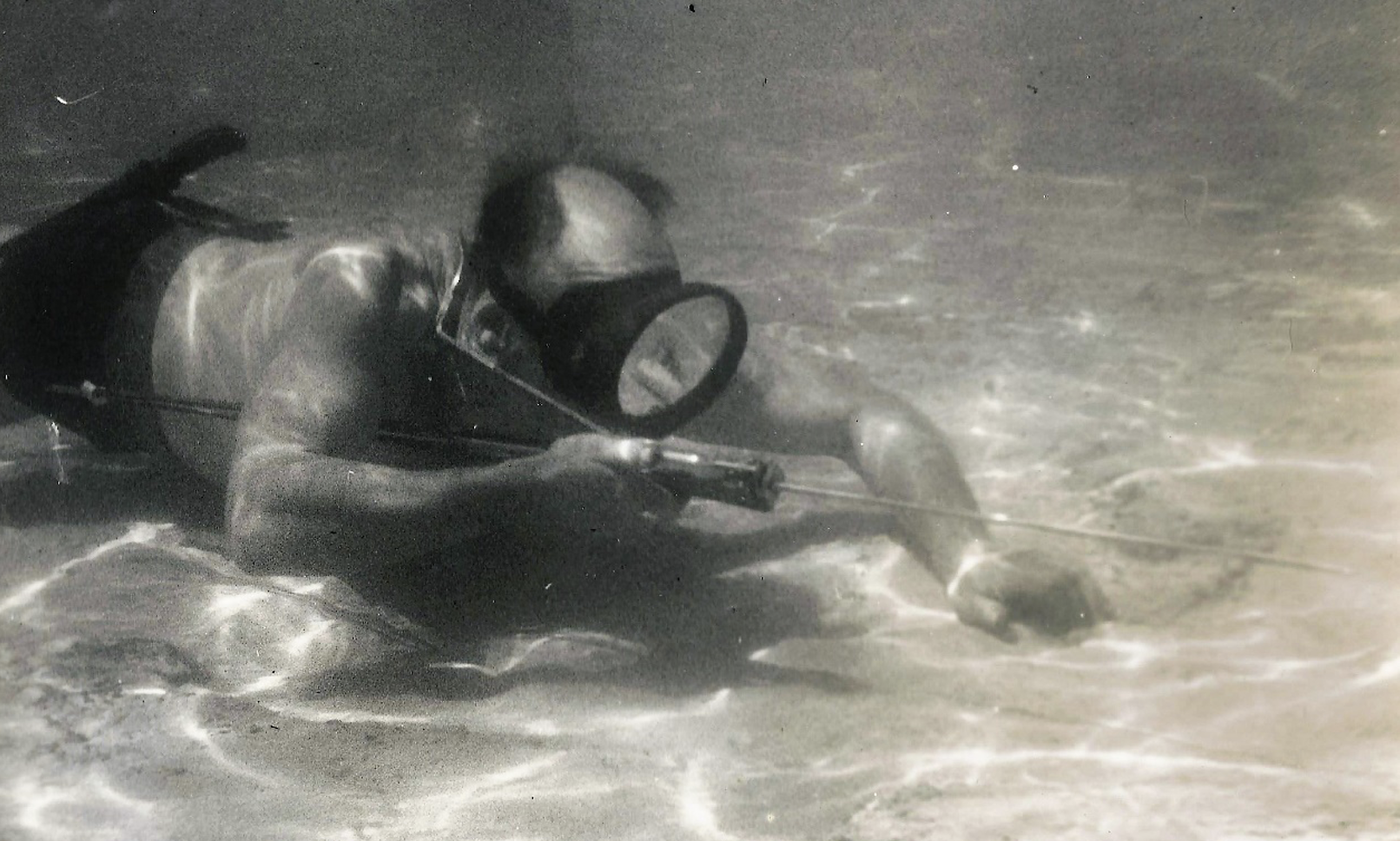On the 24th October 1941 Frank Cunliffe of Waverley NSW applied for a patent for a Fish-spear and Speargun. The patent was granted on 24th June, 1942.
According to the patent documents “The invention is a device on the catapult principle for the purpose of ejecting a metal arrow underwater in order to spear fish. To use the invention a person wears a diving mask or water goggles and dives down after fish. The speargun will throw the arrow for approximately 30 feet through the water. Fish can readily be hit at a distance of 10 feet. The shock of impact and weight of the arrow is sufficient to stop a fish until the operator of the device can swim after and seize the arrow and thus secure the fish.”

At the time Frank thought his invention was the first in the world, only discovering later that spearfishing was being practiced in the French Riviera some years earlier. Frank had always been a keen hand line fisherman but when hearing of an aborigine who used a hand spear in the waters of Balmoral he decided to give it a try. Making a crude spear from an old broom handle he went after a Blue Groper at Clovelly Bay. The Groper went into a cave about 10 feet down. He followed it and stuck his head under the cave as the groper came charging out, startling him so much he dropped the spear and headed for the surface.
At Bondi he was introduced to the use of goggles for seeing underwater. He borrowed a pair from a young lad who was using them. One eye-piece filled with water but what he seen convinced him that they were a must for underwater fishing. After some experimenting he finally made a single lens mask which covered the eyes and nose and gave something like normal vision underwater.
Now being able to see clearly he quickly realised that his thrusts with the broom handle spear were much too slow. His thoughts turned to his boyhood catapult.
The first speargun he made had a broom handle for a barrel, two strips of car tyre tube to propel the spear and part of a bucket handle for a trigger. The spear was a length of fencing wire with a large straightened fish hook on the end.
During March of 1940 while holidaying at Lake Conjola he tried his speargun for the first time, but found he’d line a fish up and then couldn’t fire.

The trigger was too stiff. Following hasty modifications to the trigger he was successful in catching his first fish.
He had difficulty aiming this speargun and to solve this he added a butt. He then found the spear kept going right through the fish. His first solution was to attach a crossbar, but this slowed the spear too much.
His final spear design consisted of two shaped moveable cross bars fixed by rivets to the spear and 12 inches apart. Each crossbar has one edge shaped to a curved point and is designed so that when in use the crossbars are parallel with and lock into the spear shaft with the points protruding a short distance. The protruding point at the shaft head allows the speared fish to pass but strike the point of the second crossbar which opens at right angles, preventing the fish sliding further down the shaft. When the fish moves back towards the head of the shaft it encounters the shaped point of the first crossbar and it too opens at right angles, retaining the catch between the two bars.
When opened the second cross bar forms a convenient handle for loading the speargun.
Frank’s initial design went through fourteen different modifications before he was finally satisfied.
At Narrabeen lagoon Frank speared 80 fish in a single day during 1942 establishing a record catch. The largest fish he caught using this speargun was an eleven and a half pounds Flathead.


During three years as an army gunner during the second world war he had two trips to New Guinea, taking his spearfishing gear with him and was able to put his skill to good use.
From his backyard workshop Frank produced and sold his “Ming” spearfishing outfits. This kit consisted of a speargun with a 4 ft. 9 in. Spear, mask and weight belt with a fish stringer. They proved very popular and many were sold. The cost of the outfit was six pounds ten shillings with spare spears costing 30 shillings each (a considerable sum in those days).
Frank Cunliffe was Australia’s first spearfishing equipment manufacturer. He also was a foundation member of the USFA, having a leading role in its formative years.
__________